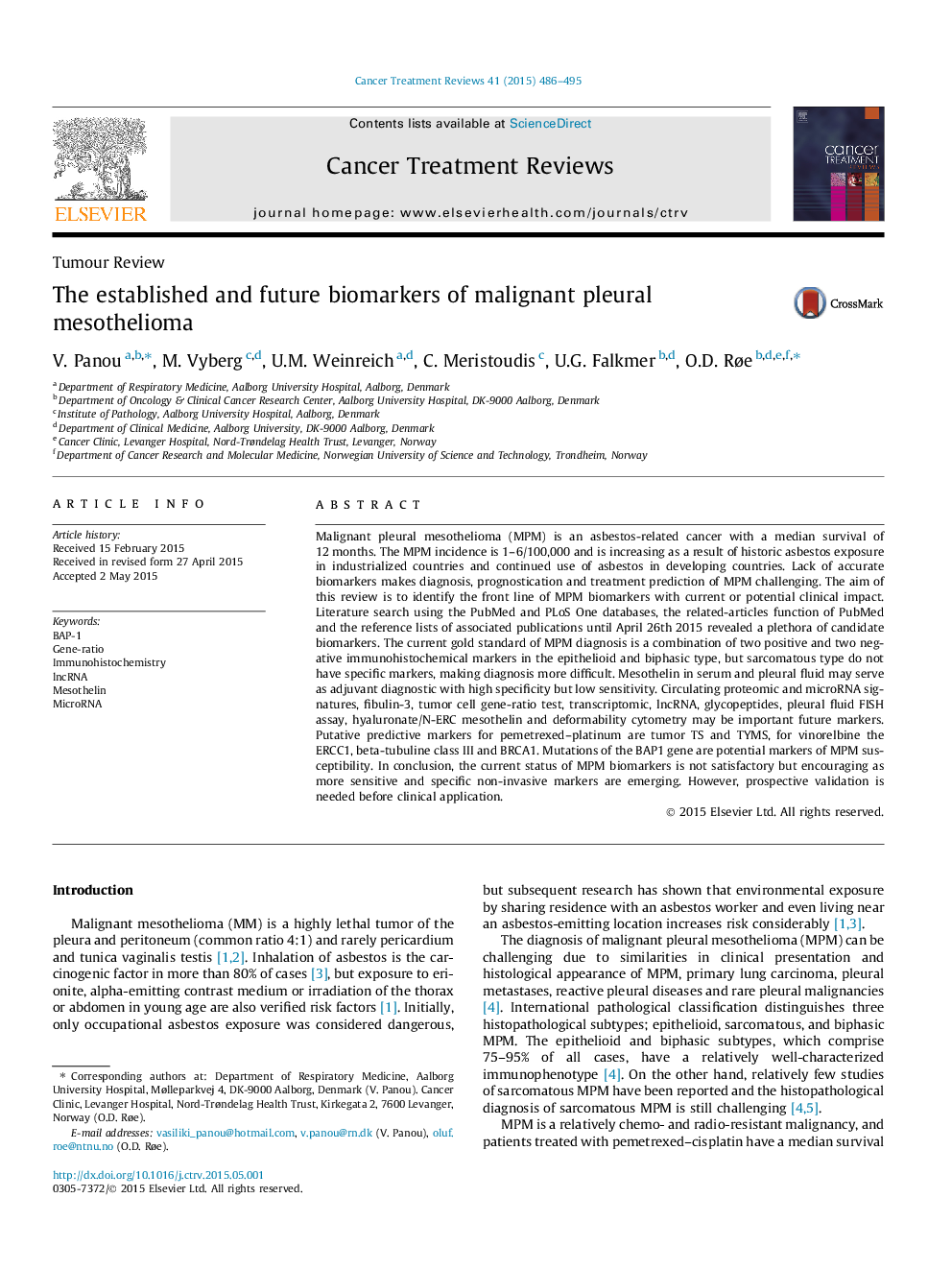| کد مقاله | کد نشریه | سال انتشار | مقاله انگلیسی | نسخه تمام متن |
|---|---|---|---|---|
| 3979745 | 1257366 | 2015 | 10 صفحه PDF | دانلود رایگان |
• A review of front line diagnostic, prognostic, predictive mesothelioma biomarkers.
• Circulating mesothelin and pleural fluid hyaluronate/N-ERC mesothelin, may be helpful adjuvant diagnostic tools.
• Non-coding RNAs, proteomics and hyaluronan may be important future markers.
• Tumor gene-ratio, FISH assay and deformability cytometry emerge as promising tests.
• Mutations of the BAP1 gene are novel susceptibility markers for mesothelioma.
Malignant pleural mesothelioma (MPM) is an asbestos-related cancer with a median survival of 12 months. The MPM incidence is 1–6/100,000 and is increasing as a result of historic asbestos exposure in industrialized countries and continued use of asbestos in developing countries. Lack of accurate biomarkers makes diagnosis, prognostication and treatment prediction of MPM challenging. The aim of this review is to identify the front line of MPM biomarkers with current or potential clinical impact. Literature search using the PubMed and PLoS One databases, the related-articles function of PubMed and the reference lists of associated publications until April 26th 2015 revealed a plethora of candidate biomarkers. The current gold standard of MPM diagnosis is a combination of two positive and two negative immunohistochemical markers in the epithelioid and biphasic type, but sarcomatous type do not have specific markers, making diagnosis more difficult. Mesothelin in serum and pleural fluid may serve as adjuvant diagnostic with high specificity but low sensitivity. Circulating proteomic and microRNA signatures, fibulin-3, tumor cell gene-ratio test, transcriptomic, lncRNA, glycopeptides, pleural fluid FISH assay, hyaluronate/N-ERC mesothelin and deformability cytometry may be important future markers. Putative predictive markers for pemetrexed–platinum are tumor TS and TYMS, for vinorelbine the ERCC1, beta-tubuline class III and BRCA1. Mutations of the BAP1 gene are potential markers of MPM susceptibility. In conclusion, the current status of MPM biomarkers is not satisfactory but encouraging as more sensitive and specific non-invasive markers are emerging. However, prospective validation is needed before clinical application.
Journal: Cancer Treatment Reviews - Volume 41, Issue 6, June 2015, Pages 486–495
